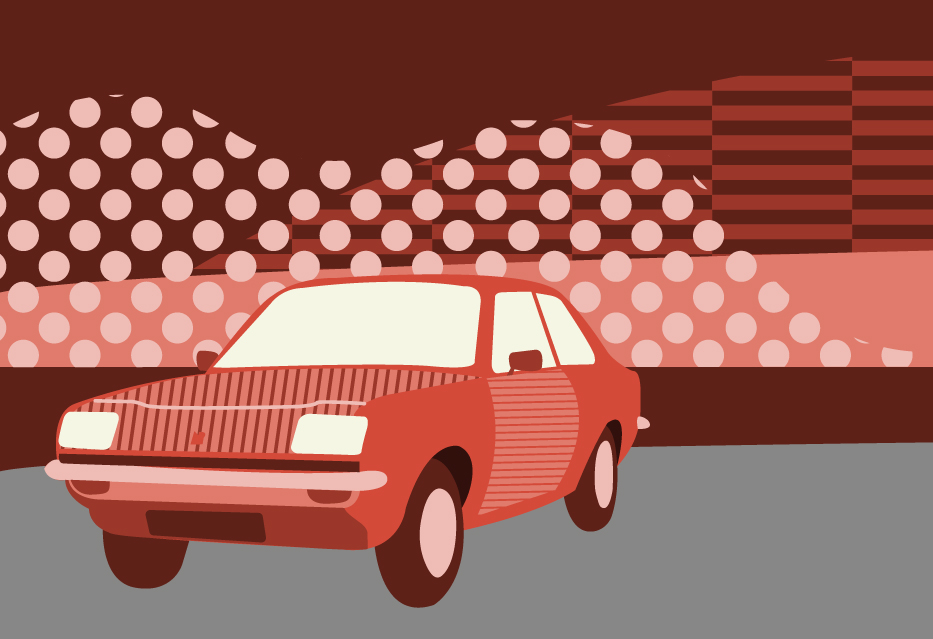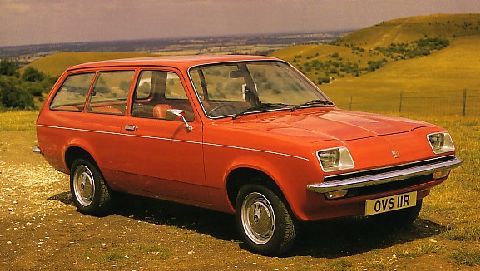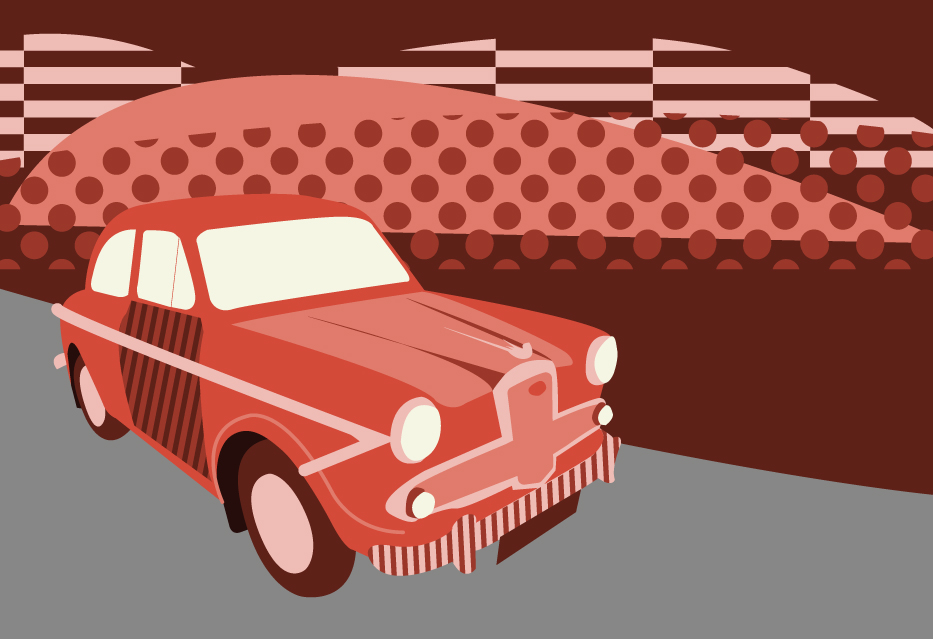The Vauxhall Chevette was a car ahead of its time – the first UK-built supermini hatchback and a market leader until the Ford Fiesta grabbed its crown in 1978.
Along with its big brother, the Cavalier, the Chevette played its part in dragging Vauxhall’s reputation off the floor in the mid 1970s, with the rally-inspired 2.3-litre HS a genuine hot hatch.
We look at the history of the car that Vauxhall claimed could be “whatever you want it to be”.
In the early 1970s, bosses at General Motors (GM) in America dreamed up the “world car programme”, a single platform for a global series of rear-wheel drive, unibody small cars.
Known as the T-car, it resulted in the Opel Kadett in Germany, the Isuzu Gemini in Japan, and the Holden Gemini in Australia, while our own Vauxhall Chevette shared a name with the US and South America’s baby Chevrolet.
The whole project was truly an international effort, with draughtsmen from Vauxhall, Opel, Holden, South Africa and Brazil working together, and parts often swapped between countries.
While Opel was tasked with working on two and four-door saloons, a couple and estate, Vauxhall was responsible for the hatchback to compete with successful European hatches like the Renault 5 and Fiat 127.
Design work on Britain’s version started in February 1972, but it was cars from Brazil and Germany that were first to market, hitting the streets nearly two years before Vauxhall’s new small car was ready.
All of which gave Vauxhall the confidence that common components had the backing of more developed programmes, and the time to come up with a distinctive identity for its own car.
Luton’s styling chief Wayne Cherry, responsible for the much-praised Firenza HP “droopsnoot”, completely redesigned the car’s front end, swapping the Kadett’s flattened nose with a prettier, Firenza-style shovel nose.
And hey presto, Vauxhall’s new baby – which fitted in below the Viva in the model range – looked like an entirely unique new car.
The sales clinic
Market research was extensive, with an outside agency employed to gauge opinion on the car in November 1973, 18 months ahead of its sales launch.
Teams of interviewers trawled the streets in and around London, eventually inviting about 700 likely Chevette-buyers to a mini motor show at the West Centre Hotel in Earls Court.
Nine cars, a debadged Chevette among them and also including a Ford Escort, Austin Allegro and Vauxhall’s own Viva, were on display, with participants asked to complete a 77-question form on three of the cars – always including the Chevette.
The results were promising, with 32 per cent of people saying they would buy the T-car, against 16 per cent for the Allegro, 15 per cent for the Ford and only eight per cent the Viva.
A majority thought the car was very sporty and of particular interest to younger people, but there was criticism of this basic model’s lack of trim, leading to a decision to upgrade the base car and add a GL model as soon as possible.
The first production pilot car was finished three days before the Christmas closure in 1974, with volume production starting the following February.
Vauxhall’s marketing efforts continued apace, with press, dealers and agents invited to the New London theatre in the West End to see a show called The Company, which ran for a week ahead of the Chevette’s official launch at the Geneva Motor Show in March 1975.
The new car went on sale on May 1, with prices starting at £1,593, with the first owner – driving instructor Fred Hordsworth – presented with the car by Vauxhall ambassador James Hunt at a special launch dinner.
Fred had previously bought the first ever Viva, and the first updated Viva…
A new advertising jingle accompanied the launch, with TV adverts proclaiming “the Vauxhall Chevette is whatever you want it to be – a sporty coupe, a family saloon, a handy estate…”
The coupe version developed by Opel was never available in the UK as a Vauxhall, and the saloon, estate and Chevanne commercial vehicle were not offered for sale until 1976, by which time the Chevette had established itself as the country’s best-selling hatchback.
Further TV adverts of the time encouraged people to test drive a Chevette, though preferably not like this…
Under the bonnet and on the road
The Chevette may have been built on an all-new platform, with a modern new body and interior, but there was nothing revolutionary under the bonnet.
It used a developed version of the same 1256cc pushrod OHV engine first seen in the Viva HC in 1971, developing 58.5bhp, and 68lb/ft of torque at only 2600rpm.
Testing the car against a Renault 5TS and Toyota Corolla 30 in July 1975, CAR magazine described the unit as “tried, true and slightly tedious”.
The engine was allied to the Viva’s four-speed gearbox, with rack and pinion steering, independent front suspension and servo-assisted front disc and rear drum brakes.
Taking the advertising campaign fairly literally, the magazine said the car was “a halfway hatchback, devised without much imagination but with a marketing man’s ideas of how to make a single model attractive enough to be some things to some men. Is this Vauxhall, then, really a multi-role car?”
Before they answered that question, the magazine praised the new car’s looks.
“Aesthetically, the Chevette is a success,” it said. “The front owes something to the Firenza project, but we cannot help wondering if the headlamp recesses will fill up with snow in the winter.”
Roadholding and handling were described as “virtually infallible”.
“No matter what the driver does, the Chevette goes where it is pointed with the minimum of fuss; it always feels taut, responsive and grippy,” it added.
Compared with the Renault, though, the Vauxhall lacked performance, with an 88mph top speed a full 9mph slower than the French car.
“Its dynamic qualities far outstrip its performance…if ever a car needed another 10 genuine horsepower to make it sing the right tune, the Chevette must be it,” was the verdict.
Getting back to that “whatever you want it to be” slogan, CAR said the Vauxhall didn’t quite hit the spot as an all-purpose vehicle.
“Vauxhall like to think of the Chevette as being a car for all purposes, which is probably a simple way of escaping from the dilemma of deciding how to describe it,” said the magazine.
Like our illustration of the Vauxhall Chevette at the beginning of the article?
Download a free high-quality poster version here.
“If you look at it as a small, moderately expensive saloon then it does not come off too badly. In the role of a multi-purpose vehicle, it comes off rather poorly, since, apart from a folding back seat, it has few of the attributes of an estate car.
“Although the idea of a three-door hatchback arrangement is great, it only really works when it offers a significant increase in versatility. In the Vauxhall, it does not.”
To be fair to the car, the same could probably be said of every hatchback available across Europe at the time.
In essence, it was simply a small family hatchback, giving more versatility than, for example, a Viva or a contemporary Ford Escort.
The Chevette family
By 1976 there was a Chevette for pretty much every purpose, an estate and a two or four door saloon joining the hatchback, all offered with an ever-increasing range of trim levels up to the GLS, which came with velour upholstery.
And, of course, the new Chevanne.
Both the saloon and estate competed with the Ford Escort, which had yet to transform into a hatchback, and CAR magazine, naturally enough, pitted the two home-built small estates against each other, with the Fiat 128 estate thrown in for good measure.
The Chevette, it said, is a “logical potchpotch (or hodgepodge, if you will) of parts from both sides of the Channel, no doubt thought up or approved by brains beyond the Atlantic.
“Aft of the cod-faced Chevette facade, apparently making a meal of its bumper, the Vauxhall is conventional US-influenced European, quite good-looking but without a really inspired line or curve to excite or offend the aesthetic senses.
“Because of this it lacks the flair of any of the rest of the Chevette range, but its tailend shape is more practical than that of the fastback Viva or Magnum estates.”
Flair probably wasn’t high on the estate stylist’s agenda back in the 1970s, and it was on the road that the Chevette again came into its own, trumping the Ford for handling and roadholding, but falling down on rear passenger roominess compared to its Dagenham rival.
“For conventional, entirely predictable good behaviour and accurate response to the driver’s movements, the Vauxhall takes a lot of beating,” the magazine said.
“It has excellent steering, very light but with adequate self-centring and enough feedback from the road to tell you what’s going on without transmitting shake or shock.
“Choosing between these three estates is simplified if you contemplate carrying adults on the back seat more often than occasionally; if so, it has to be the Ford. The others are for unwelcome mother-in-laws or deprived children.
“There’s no doubt, though, that the Vauxhall is more of a driver’s car, which is very good company when one is pressed for time, as presumably many an estate car driver is and needs a really sure-footed, responsive vehicle which makes no special demands on his skill.”
The sporting Chevettes
Much was made of the Chevette’s qualities as a driver’s car, with sure-footed handling and roadholding only let down by its somewhat pedestrian performance.
So it was ripe for a sporting version, something to compete with the all-conquering Ford Escort RS, both on the rally circuit and on the road.
That the 2300HS emerged as a genuine contender owes much to Bill Blydenstein, who ran Dealer Team Vauxhall (DTV) – a group of Lond-based dealers set up in 1971 to support racing and rallying Vauxhalls.
Blydenstein had already been tinkering with a sporting Chevette before he was officially put to work on the 2.3-litre HS rally car, producing a limited number of 1511cc specials to order.
This car, known as the Blydenstein Chevette 1500, used a bored-out version of the standard 1256cc Viva lump, fitted with a longer-stroke crankshaft, Hepworth Powermax pistons, DTV stage 2 cylinder head and Lumenition electronic ignition.
All this resulted in a significant performance boost, pushing the top speed from 88mph to 98mph and improving the 0-60 time to 11.4 seconds. It was quicker from 50mph to 70mph than a BMW 320i.
Autocar got hold of the prototype in the summer of 1976, noting the “amazing improvement in performance with a gain in overall economy”.
Adrian Flux Classic Car Insurance
“The speeds and attitudes that the car can be thrown around at are really remarkable,” the magazine wrote. “As a logical successor to such peers as the Mini Cooper S and Escort Mexico, the 1500 Chevette for little over £2000 could create a whole new cult all of its own.
“Though carried out essentially as an engineering exercise, the fitting of a larger engine to the Chevette may well cause considerable customer interest in replicas of the car we tried.”
It’s thought that eight complete 1500cc engines and kits were produced by Blydenstein for Chevette conversions, but it’s not known how many survive today.
No matter, something even better was to emerge from DTV and Blydenstein when new Vauxhall chairman Bob Price gave the go ahead for the brand to increase its profile in international rallying.
The nimble Chevette was chosen to take on the RS, and Vauxhall built 400 production vehicles for Group 4 homologation purposes.
On sale in 1978, the HS was equipped with a 16-valve, 2279cc twin-cam engine married to a five-speed Getrag transmission, with an exotic (for a road car) dog-leg first gear.
A pair of Stromberg carbs helped shove out 135bhp at 5,500rpm, tame compared to the rally car’s 240bhp, but more than enough to trounce the road-going, 109bhp RS2000.
While the Ford was good for 110mph, the Chevette could hit 7mph more, and hit 60mph a few fractions of a second quicker in 8.4 seconds.
On the outside, the 2300HS got front and rear spoilers which, as well as looking the part, reduced drag by 14 per cent compared with the standard car.
Silver paintwork with red strobe-style lettering and side stripes combined with 13-inch alloy wheels completed the sporty exterior, while inside vibrant red and grey chequer seats and doorcards joined red carpets and a deep-dish three-spoke steering wheel and a host of dials and gauges.
At the time, the only hatch that could compete on the road with the 2300HS was the Sunbeam Lotus, with its 150bhp twin-cam engine.
Which is why CAR magazine pitted the two head-to-head in November 1979 under the headline: “Here come the superbrats”.
With its extra Lotus power, the Sunbeam is the quicker of the two, reaching a startling 124mph and 0-60mph in just 7.8 seconds, but the Vauxhall was £1,000 cheaper (though it was still very expensive at more than £5,000).
CAR’s Mel Nichols described the HS as “taut, tidy, solid and punchy; a car that is without flab and brimming with purposefulness but without the raunchiness that might have been present in its make-up had it been done less well”.
The engine was “immediately likeable for its strength, its flexibility, its response and the evenness of its performance – which is, of course, considerable.
“The Chevette’s steering is another meaty, effective ingredient, blending well with the others to make this such a handy, useful and pleasing little bombshell in town as well as on the open road, although the steering is not especially light or razor sharp.
“Roadholding is of the truly tenacious variety and the car can be whipped around corners really quickly. You can throw it and do as you wish with it. A very fast, safe little car that really makes you want to use it.
“Overall, a very well-developed little muscle car with considerable appeal to someone who will use and enjoy the high level of performance. In standard form, it isn’t as superficially refined as the Sunbeam Lotus but, taken as a whole, it is just as refined and competent under the skin.”
Driving an example nearly 40 years later, Autocar’s Alan Taylor-Jones naturally finds the car lacking in punch and grip compared with today’s modern hot hatches, but that misses the point.
“Compared to a modern hatchback that seems to be able to carry ridiculous speed with ease, the Chevette HS is a car you have to work at,” he wrote. “Even if you are keeping it on the boil, it’s not fast in a straight line and doesn’t have a vast amount of grip either.
“Don’t think I’m complaining though, you can have an absolute riot in this car whilst keeping well within the speed limits. After a spirited drive, I step out for photos and can’t help but look back at the little Vauxhall and grin. Regardless of how fast you’re going, surely that’s what really matters to a driver? I’m sold, that’s for sure.”
Variations of the HS, produced in very small numbers, included the HS-X sold by Mamos Garage at a premium price of £6,399 and featuring metallic black paintwork and wood trim, and the rapid, turbo-charged Panther Westwind Chevette.
To remain competitive on the rally circuit into the 1980s an evolution version, the 150bhp HSR, went into production in 1979, with flared wheelarches and a more aggressive bodykit.
It was dubbed Plastic Fantastic thanks to its fibreglass front and rear wings, spoiler, bonnet and tailgate.
Just 50 examples were made to comply with Group 4 evolution rules, although these were largely created by rebuilding unsold HSs and modifying customer cars.
On the rally circuit, while the HS and HSR couldn’t dethrone Ford, they did prove themselves worthy challengers in the hands of drivers such as Pentti Airikkala, Jimmy McRae and Tony Pond.
Airikkala won the British Open Rally Championship for drivers in 1979 and the car won the manufacturers title in 1981 before a merger between DTV and Dealer Team Opel saw the Manta 400 take over rally duties.
Here’s Airikkala scaring Harry Carpenter senseless in an HS.
The Chevette survives into the ‘80s
In theory, the Chevette should have evolved into GM’s new “world car”, as the Opel Kadett C was superseded by the Kadett D in 1979.
The Fiesta had taken over as the UK’s best-selling hatchback, and the new Metro was on the horizon, but the popular little Vauxhall was still selling well.
And that wasn’t the only reason the car soldiered on into the ‘80s, running alongside its supposed replacement, the newly-named, front-wheel drive Astra, which ultimately replaced the Viva in the Vauxhall range.
GM had planned to mothball much of the Ellesmere Port plant where the Chevette was built, leaving just an assembly shop to build kits of the new Kadett shipped over from Opel’s Russelsheim plant.
But such a move would have caused a huge loss of workforce so, after representations to GM, the decision was taken to continue manufacturing an updated Chevette alongside the Astra.
For 1980, flush fitting headlights replaced the recessed units, giving the car a family look with the Cavalier, while re-designed front seats gave marginally more rear legroom.
Under the skin, there were new Bosch distributors, revised heater ducting and a simplified throttle linkage, but the engine was the same 1256cc Viva unit, albeit with a claimed four per cent improvement in performance.
Testing the facelifted car, a 1.3L, Motor magazine said the Chevette continued “to earn its keep in the UK with a strong reputation for economy, low running costs and reliability, and a consistently impressive sales performance”.
Vauxhall was confident it wouldn’t take sales away from the more upmarket Astra, but had its work cut out competing with a crowded hatchback market including the Mazda 323, Toyota Starlet, VW Polo and Talbot Horizon, as well as the Fiesta, Renault 5 and new Metro.
Although it was somewhat long in the tooth compared with some of its rivals, Motor said: “As a driver’s car, the Chevette still takes some beating.
“(Its) handling is undoubtedly one of its greatest strengths, promoting a feeling of great security even during the most spirited driving.”
While out-and-out performance was still “unexceptional”, the Chevette was still considered “good value and though its ride/handling compromise is made to look inferior by that of its eventual successor, the Astra, its comparable economy, smart appearance and ease of driving remain appealing”.
The Chevette was even exported to Germany, where the Kadett C had been replaced by their version of the Astra, giving drivers the option of a rear-wheel drive hatchback.
Badged neither as Vauxhall or Opel, but merely as Chevette, Opel dealers sold 12,332 in Germany from October 1980.
Like our illustration of the Vauxhall Chevette at the beginning of the article?
Download a free high-quality poster version here.
Special and limited editions
As well as the rally-inspired HS and HSR developed by Bill Blydenstein and DTV, a range of “dealer specials” were developed by Star Custom Vehicles of Ampthill, Bedfordshire.
Star began developing these specials to help sell more vehicles, originally through London dealerships but ultimately nationally with Vauxhall’s backing.
All the cars featured unique paint jobs and trim, with the BlackWatch coming in, you’ve guessed it, black and silver paint with red graphics, a sports steering wheel, flared arches and low-profile wheels.
Based on the Chevette E, it came with a walnut dash and door trim, eight-spoke chrome wheels, a rear spoiler and a radio / cassette player.
The Grenadier, based on the Chevette L, was again black but with somewhat less appealing orchid and silver additions, retaining the rear spoiler and interior trim but adding alloy wheels and a removable tinted glass sunroof.
The Chevette Lux came in a choice of four two-tone colours, red and silver, yellow and ivory, blue and silver, and orange and tan, each with their own interior trim colour.
Again, there was a walnut fascia and door cappings, a sunroof, and the addition of twin quartz Halogen fog and spot lamps.
For the Queen’s Silver Jubilee in 1977, the Vauxhall main dealer in Chester came up with the Jubilee, based on the Chevette L’s mechanicals but painted metallic silver with a contrasting royal blue side flash and vinyl roof and tailgate cover.
As well as these dealer specials, Vauxhall produced a variety of factory limited editions, including the Chevette Sun hatch in 1980, which naturally enough featured a sunroof, plus tinted glass, sports wheels, metallic paint, and body mouldings.
In May 1981, the Chevette Black Pearl came with natty silver strobe strips, while the following year’s all-black Silhouette was the final effort to jazz up the hatchback that was destined to be phased out in favour of the Spanish-built Nova in 1983.
Saloons and estates remained in production until early in 1984, when the previously planned mothballing of the Ellesmere Port plant finally went ahead, much to the anger of British workers.
In total, 415,000 Chevettes were sold in Britain between 1975 and 1984, and its departure marked the last time Vauxhall had an identity distinct from Opel.























